New Engines Give Volvo More From Less
By John Gilbert
LAS VEGAS, NEV. — Volvo has always built solid and substantial vehicles, with equal parts inherent safety and the durability to last indefinitely. While mastering those impressive objectives, Volvo engineers also are programing their cars for the future, with a new family of 4-cylinder engines that can be tuned and tweaked to span all the demands of power and efficiency for the company’s latest sedans, wagons and SUVs.
Volvo’s recent models have used 4-cylinder, 5-cylinder, 6-cylinder and even V8 engines to handle the varying needs of different Volvo vehicles. While Volvo’s assorted engines have all won acclaim, the magic of computerized supercharging and turbocharging can push its new high-tech 4s to cover all horsepower and torque requirements.
The new modular Volvo-built 2.0-liter 4 is designed to be built alongside the current tried and true 2.5-liter 5-cylinder and the 6, engines that will be phased out as the new 4s are phased in. The existing 5-cylinder has 226 horsepower and 275 foot-pounds of torque; the existing 6 has 276 horsepower and 325 foot-pounds — good figures indeed.
However, the new “T5” is turbocharged, and the new “T6” is both supercharged for low-RPM duty and turbocharged for the high end. Using both techniques gives the new 4 stunning power — 302 horsepower and 295 foot-pounds of torque. For good measure, both new engines are rated at over 30 miles per gallon in highway driving, and have a combined city-highway estimate of either 28 or 29 mpg.
“We were very proud when our 6-cylinder turbo made the ‘Ward’s 10-Best Engines’ list, but our new 4-cylinders will outperform them and will crowd them out.” said Jan-Erik Larsson, Volvo’s chief powertrain engineer. ”We are develping other engines as well. In Europe, we have a turbo-diesel, and a plug-in hybrid. We have put a lot of resources into producing the attributes customers want.
“Nobody can predict what future cars will be using. Long-term, we think we’ll be using electric power, but as we get there, will we be using gasoline engines, diesels, hybrids, or pure electric power? No question, our industry is in a state of transition right now. Whatever we will be using by 2050, we know that internal combustion engines will still be in use in some form in the near future, say, 2020.”
As an automobile company always exuding stability, Volvo has spent a lot of its history in transition. In recent years, that transition has been toward high style, and Volvo could well place the new cars on a pedestal and promote their styling alone. Instead, it’s time for Volvo engineers to show off their newest engines, which were introduced to the media in the latest S60 sedan, V60 wagon, and XC-60 compact SUV through the countryside surrounding Las Vegas. It took most of us in the automotive media a while to figure out the new designations, because while they describe different engineering tricks on the same basic engine, they are, at best, confusing.
Not to Larsson, of course, although the feeling lingers that the engineers might have had to follow somebody’s marketing scheme in naming the engine T5 and T6. That designation used to stand for the turbo and the number of cylinders, as in “turbocharged 5“ and “turbocharged 6” — as opposed to the “I-5,” which is the non-turbo version of the 5-cylinder. But on the new engines, the designation is only an alpha-numeric code to signify which version of the new 4 is under the hood.
The other new code term is “Drive-E,” which the more foolish among us thought meant an electric-powered car. Nay nay, as they say; it means “Drive Efficiency.”
For the 2014 model year, the T5 and T6 will be built by Volvo alongside the I-5, which will continue until the new vehicle models signal the end of the 5-cylinder’s life cycle. When the new platform is introduced, all models will offer all-wheel drive as an option, and the new 4-cylinder engines will be the only one offered. But with all that power, it will be the only one needed.
Volvo, which used to be owned by Ford, is now owned by a Chinese holding company that also owns Geely, a popular /chinese compact sedan. That has helped Volvo make sales inroads to China, the new world’s largest auto market. But mostly, the financial support has helped Volvo contibnue on its dedicated course to build solid and safe cars that now also offer high technology and performance.
Design and style often trump engineering in auto marketing schemes, and the new Volvos could easily be put up on a pedestal for their dramatic style, with a low and sleek nose rising from a horizontal grille, to a pleasingly tapered batch of contours and curves that make it easily the most attractive Volvo sedan ever. The interior is just as impressive, mainly because it begins with a continuation of Volvo’s tradition of having simply the best and most comfortable seats in the industry. While gripped in the cocoon-like enclosure of a supportive seat, you might think it resembles an oversized version of current, high-tech child seats, and you find instrumentation and controls that all make sense for a cutting-edge vehicle.
Volvo has never dwelled on styling, even when it emerged from the rounded shapes of the early 1960s to the squarish energy-absorbing compartments that defined the sedans from mid-1960s into the new century. But make no mistake, the new Volvos are as attractive as the flashiest vehicles from the most style-conscious companies, even though, through it all, Volvo has remained uncompromising in its determination to build the safest vehicles on the planet.
Ask anyone who owns a 10-year-old Volvo and be prepared to hear how the engine remains smooth-running and powerful after topping 100,000 miles, or 200,000, or more. With durability mastered, Volvo engineers have gone after performance, using all the latest multi-valve, overhead-camshaft, direct-injection and turbocharging tricks to coax them to over-achieve. Their reach has been impressive, and now their grasp seems to have caught up to their reach.
The most progressive automobile engines use high-strength aluminum in the block, stronger and lighter pistons, high-revving overhead-camshaft actuated valvetrains, innovative tricks of combustion-chamber dynamics, and computer-operated fuel intake. Those features help engines with smaller displacement and fewer cylinders outperform larger but more primitive and less fuel-efficient engines — the kind we grew up with and still may know and love.
That is the transitional plateau Volvo engineers have attained. The future will hold amazing new levels, but getting there will be most of the fun.
We found out that the new Volvos can be a lot of fun as we drove our assortment of sedans and wagons around and through Las Vegas, out on the peripheral freeways to the stunning Mars-scapes of Red Rock Park, and over various highways through the mini-mountains toward Hoover Dam. They were swift, strong on acceleration and easy on gas. And none of us complained that we “only” had 4 cylinders.


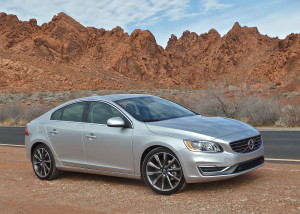
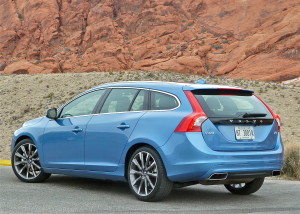
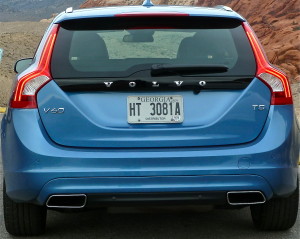
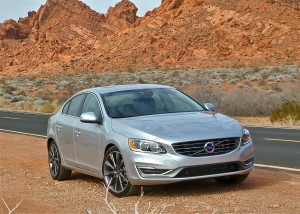
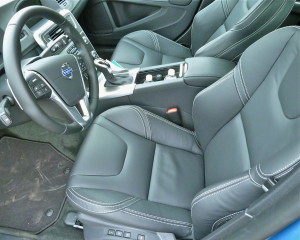
 John Gilbert is a lifetime Minnesotan and career journalist, specializing in cars and sports during and since spending 30 years at the Minneapolis Tribune, now the Star Tribune. More recently, he has continued translating the high-tech world of autos and sharing his passionate insights as a freelance writer/photographer/broadcaster. A member of the prestigious North American Car and Truck of the Year jury since 1993. John can be heard Monday-Friday from 9-11am on 610 KDAL(www.kdal610.com) on the "John Gilbert Show," and writes a column in the Duluth Reader.
John Gilbert is a lifetime Minnesotan and career journalist, specializing in cars and sports during and since spending 30 years at the Minneapolis Tribune, now the Star Tribune. More recently, he has continued translating the high-tech world of autos and sharing his passionate insights as a freelance writer/photographer/broadcaster. A member of the prestigious North American Car and Truck of the Year jury since 1993. John can be heard Monday-Friday from 9-11am on 610 KDAL(www.kdal610.com) on the "John Gilbert Show," and writes a column in the Duluth Reader.